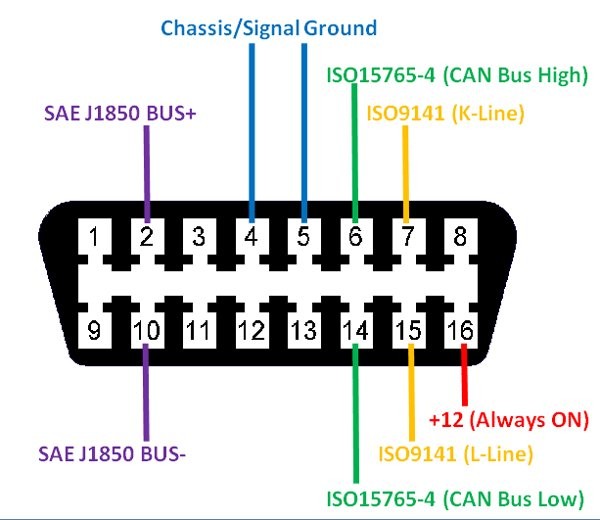Many vehicle enthusiasts enjoy customizing their cars with aftermarket accessories to enhance functionality or aesthetics. One popular gadget is the OBDII (On-Board Diagnostics II) speedometer, also known as a head-up display (HUD), which projects driving speed and other vehicle data onto the windshield. These devices plug directly into your car’s OBDII port, typically located under the dashboard, for easy installation and access to vehicle information. However, sometimes integrating these devices can lead to unexpected issues. This article addresses a common problem encountered when installing an Obdii Speedometer in certain vehicles: the activation of the Anti-lock Braking System (ABS) warning light.
Identifying the ABS Light Issue After OBDII Speedometer Installation
One car owner, after installing an aftermarket OBDII speedometer in a 2001 Toyota Tundra, experienced a flashing ABS light immediately after starting the vehicle. This issue arose directly after plugging in the new speedometer device. Upon disconnecting the OBDII speedometer, the ABS light returned to normal, indicating a clear link between the device and the problem. This situation is not unique and can occur in other vehicle models as well when using similar OBDII accessories.
Pin Isolation: A Practical Solution
The solution identified for this ABS light problem involves isolating specific pins within the OBDII connector of the aftermarket speedometer. The root cause is often attributed to a conflict or short circuit caused by one of the pins on the speedometer’s connector interfering with the vehicle’s system. In the case of the Toyota Tundra owner, pin 11 of the OBDII connector was identified as the culprit. By carefully removing this pin from the speedometer’s connector, the ABS light issue was resolved, and the OBDII speedometer functioned correctly without triggering any warning lights.
 OBD2 Connector Pinout Diagram for Automotive Diagnostics
OBD2 Connector Pinout Diagram for Automotive Diagnostics
Step-by-Step Guide to Determine the Problematic Pin
Before permanently removing any pins, it’s crucial to identify the specific pin causing the conflict in your vehicle. A systematic approach is recommended to avoid irreversible changes. Here’s how to safely identify the problematic pin:
- Prepare for Testing: Gather a pair of needle-nose pliers.
- Pin Isolation Testing: Start with pin 9, then 10, and then 11 on the OBDII connector of your speedometer. Using the pliers, gently bend one pin (e.g., pin 9) towards the bottom of the connector housing, effectively isolating it from making contact when plugged in.
- Vehicle Test: Plug the modified speedometer connector back into your vehicle’s OBDII port and start the car. Check if the ABS light is still illuminated.
- Repeat and Identify: If the ABS light persists, unplug the speedometer, bend the next pin (e.g., pin 10) in the same manner, and repeat the vehicle test. Continue this process, testing one pin at a time.
- Pin Removal (If Necessary): Once you identify the pin that, when isolated, resolves the ABS light issue, you can then carefully remove that pin from the speedometer’s connector. Important: Only remove the pin from the speedometer’s connector, not from the vehicle’s OBDII port.
Caution: Do not remove any pins without testing. Bending pins first allows you to test their impact and confirm the correct pin before making permanent alterations.
Understanding the Potential Cause
The precise reason why certain OBDII speedometer pins cause issues can vary. However, a likely explanation is a minor electrical short or signal conflict between the aftermarket device and the vehicle’s sensitive ABS system. OBDII ports are designed to provide diagnostic and data access, but variations in how aftermarket devices utilize these connections can sometimes lead to unintended interactions with other vehicle systems. By removing the problematic pin, you effectively eliminate this conflict, allowing the speedometer to function while maintaining the integrity of your vehicle’s other systems.
Conclusion: Integrating OBDII Speedometers Effectively
Integrating an OBDII speedometer can be a great way to enhance your driving experience with real-time data displayed conveniently. However, encountering issues like ABS light activation is not uncommon. By understanding the pin isolation method described, you can troubleshoot and resolve these problems, ensuring your aftermarket OBDII speedometer works seamlessly with your vehicle. Always proceed with caution and systematic testing when modifying electrical connectors in your vehicle.
 Car Head Up Display OBDII Speedometer Product Image 1
Car Head Up Display OBDII Speedometer Product Image 1

